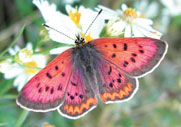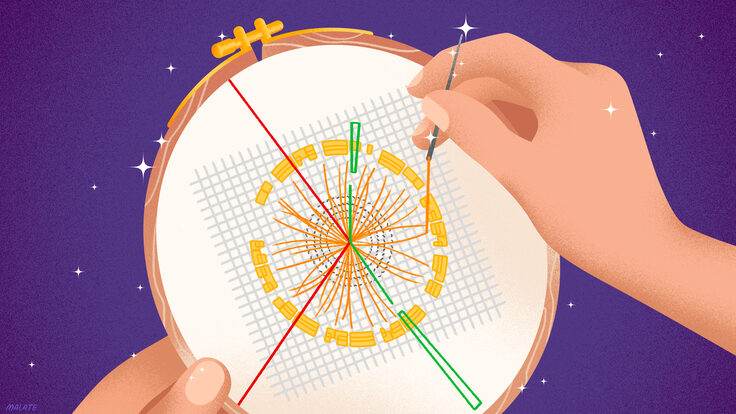 |
| Photo courtesy of Tom Peterson |
He stalks rare prey for its own good
Tom Peterson loves hunting season.
He spends his lunch hours scouting the best spots, and weekends lurking around the edges of Fermilab's ponds and moving as silently as he can through old fields. He doesn't want to scare his pregnant quarry. The season is short, the targets small and elusive.
Ask the Fermilab engineer, who specializes in cryogenics, why he endures the heat and the dirt and he'll tell you it's for a good cause: saving ecosystems.
When he bagged a beauty last year, he gave it to a friend at the Chicago Academy of Sciences' Peggy Notebaert Nature Museum. After spending time in the museum's breeding lab, that pregnant purplish copper butterfly produced hundreds of eggs, which became ammunition in the battle to repopulate the species in northern Illinois and eventually the entire state.
The purplish copper, distinguished by a purple tint on the male's wings that fades with age, has lost habitat to farming and subdivisions in Illinois and other parts of the Midwest, as well as in the eastern United States.
"Fermilab is one of two areas that retain big populations, and all of our breeding stock comes from Fermilab," says Doug Taron, curator of biology at the museum, which is working to restore populations of butterfly species that were common at the turn of the century.
More than 50 butterfly species find a haven on the lab's 6800-acre campus, which includes 1100 acres of restored native prairie and hundreds of acres of farm fields, woodlands, and wetlands.
It's difficult to say, for any species, what will happen if it vanishes, Taron says: "But the less biodiversity you have, the worse it is for the ecosystem." Butterflies' pollination of plants and critical place in the food chain make them valuable for much more than aesthetic reasons.
The females Peterson bags in this year's hunt will be put on display in the museum's breeding lab and their descendents moved to new homes in forest preserves, where museum staff hope they will settle in and lay their eggs.
Tona Kunz
Click here to download the pdf version of this article.






